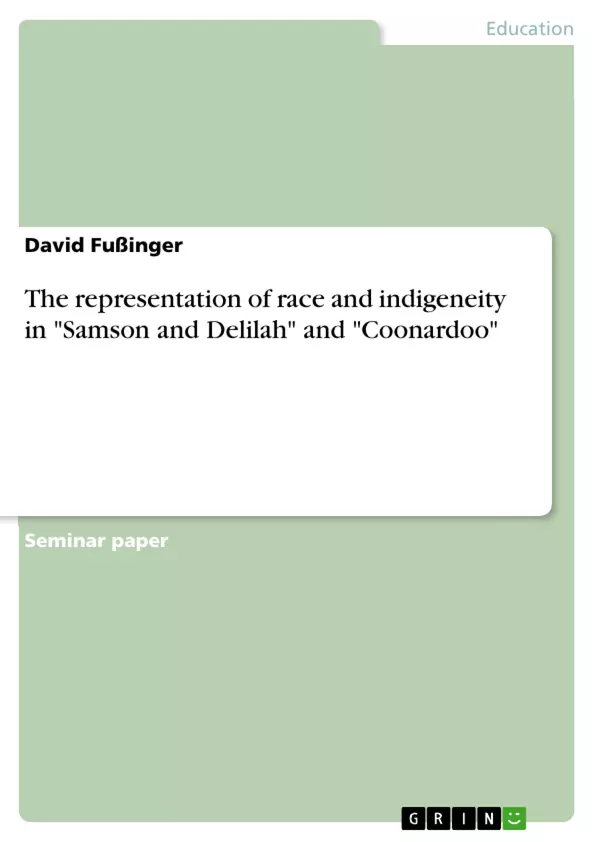When we think of Australia, we associate certain images, experiences or even stereotypes with the country that is at the same time a continent, located on the southern hemisphere of the world. Indigenous people, the so-called Aborigines, modern and popular cities, beautiful beaches and an exotic flora and fauna and certain sights, such as Ayers Rock for example, account for a stereotypical representation of the land which in fact holds more appeal if you only take a closer look. These associations are very superficial and originate from a Eurocentric perspective, a term that will appear again later in this essay. Whether you regard Australia and its outline on the map as being on the southern hemisphere for example, simply depends from which angle of vision one looks at the country. Since the emergence of the Mercator Atlas, a certain view of the world has been established. Today, this view is still perceived as dominant and correct and is supposed to reflect reality. It’s the underlying ideology of western European countries whose ideas of structuring the world by mapping and timing have also influenced the
Australian continent. More importantly, the colonists defined their identity by demarcating them from other cultures. What didn’t conform to European standards wasn’t perceived right and therefore had to be changed in order to adapt to conventional norms. Even today
the connection between Australia and its former ruling British center and the impact of colonialism on post-colonial Australia becomes visible in everyday life and is also manifested in cultural discourses such as literature and film production. The aim of this
essay is to give an outline of the terms imperialism, colonialism and post-colonialism, their relationship and influence on the colonized country Australia and its impact upon the representation of indigeneity and race. Before concrete representation of characteristics that have to do with indigeneity and race will be examined, the reader will be provided with some background information to better understand the sometimes conflicting topic and its deep-set causes. The term representation will also be explained in detail, because it entails a process of seeing and perceiving the world from a dominant perspective that explains a certain depiction of instances such as the indigenous people. On the basis of
the movie Samson and Delilah and the novel Coonardoo the reader will experience the power of representation by language, silence ...
Inhaltsverzeichnis (Table of Contents)
- Introduction
- The influence of colonialism and imperialism
- The influence of post-colonialism on the representation of race and indigeneity
- The meaning and significance of Representation
- The representation of race and indigeneity
- The representation of indigeneity
- The representation of race
- Samson and Delilah
- Coonardoo
- Conclusion
Zielsetzung und Themenschwerpunkte (Objectives and Key Themes)
This essay explores the impact of colonialism and post-colonialism on the representation of race and indigeneity in Australia. It examines the historical context of colonization and its enduring effects on indigenous communities, focusing on the portrayal of these groups in literary and cinematic works. The essay aims to analyze the role of representation in shaping perceptions and understanding of race and indigeneity within a post-colonial context.
- The historical impact of colonialism and imperialism on Australian society and its indigenous populations.
- The influence of post-colonialism on the representation of race and indigeneity in Australian literature and film.
- The role of representation in shaping perceptions and understanding of race and indigeneity.
- The portrayal of race and indigeneity in specific works such as the film "Samson and Delilah" and the novel "Coonardoo."
- The ongoing challenges and complexities of post-colonial Australia in relation to race and indigeneity.
Zusammenfassung der Kapitel (Chapter Summaries)
The first chapter introduces the concept of Australia as a complex and multifaceted nation, challenging stereotypical representations that often dominate global perceptions. It highlights the Eurocentric lens through which Australia is often viewed, emphasizing the need for a deeper understanding of its history and the lasting effects of colonialism.
The second chapter provides an overview of colonialism and imperialism, exploring their origins, mechanisms, and impact on the colonized territories. It examines the concept of the civilizing mission, highlighting how European ideals and norms were imposed on indigenous populations, leading to exploitation and social, cultural, and economic disenfranchisement.
The essay delves into the impact of post-colonialism on the representation of race and indigeneity, analyzing the ways in which the legacies of colonialism continue to shape Australian society and culture. It explores the complex interplay between dominant narratives and the experiences of marginalized groups, particularly indigenous Australians. The chapter also discusses the significance of representation and its role in shaping perceptions and understanding of race and indigeneity.
The chapter examines the representation of race and indigeneity in detail, analyzing both the representation of indigenous Australians and the representation of race more broadly. It explores the ways in which these representations are shaped by historical and cultural contexts, and how they contribute to the ongoing discourse surrounding race and identity in Australia.
Schlüsselwörter (Keywords)
The essay focuses on the key terms and concepts of colonialism, imperialism, post-colonialism, race, indigeneity, representation, and the Australian context. It explores the ways in which these concepts intersect and inform the ongoing dialogue surrounding race and identity in post-colonial Australia.
- Quote paper
- Diplomsportwissenschaftler David Fußinger (Author), 2011, The representation of race and indigeneity in "Samson and Delilah" and "Coonardoo", Munich, GRIN Verlag, https://www.grin.com/document/195609



